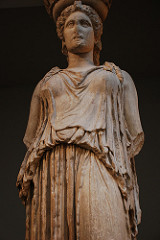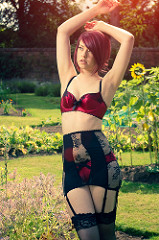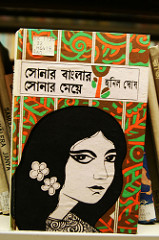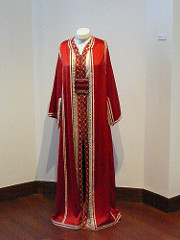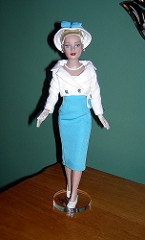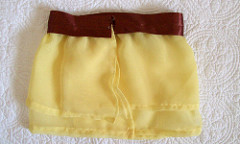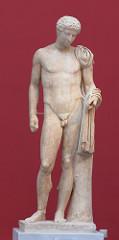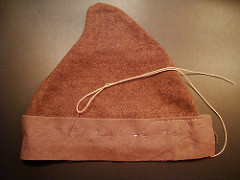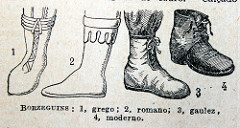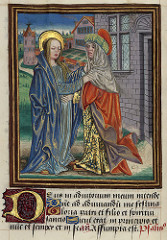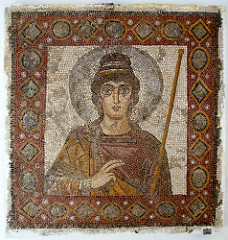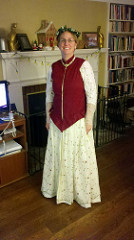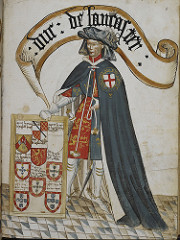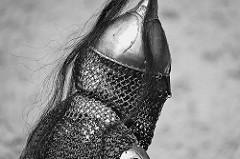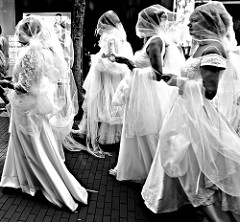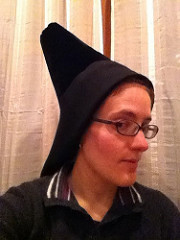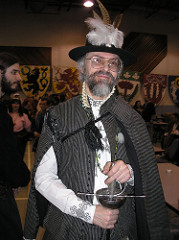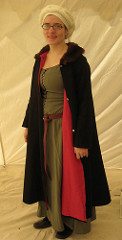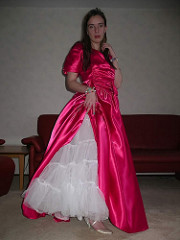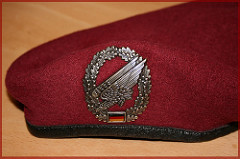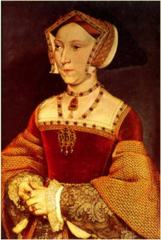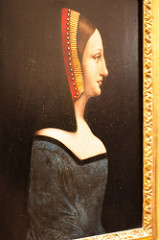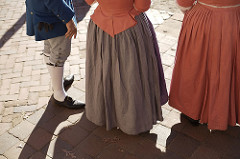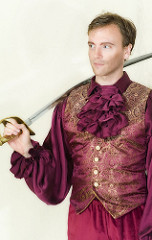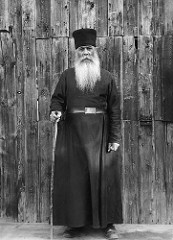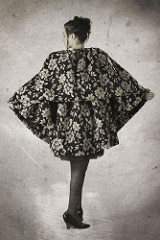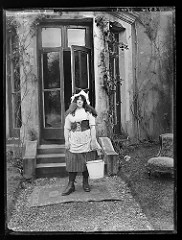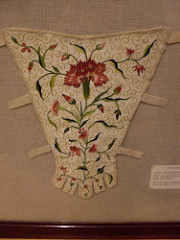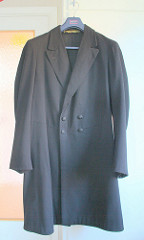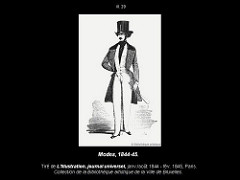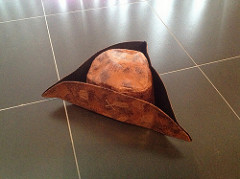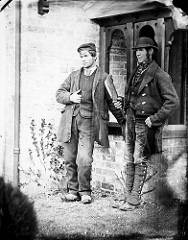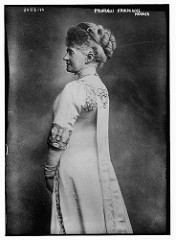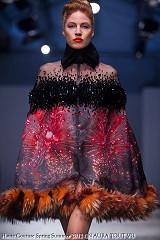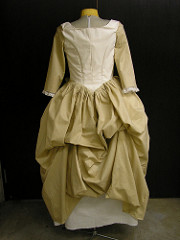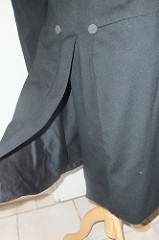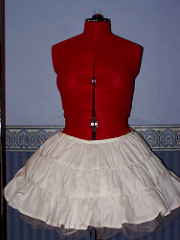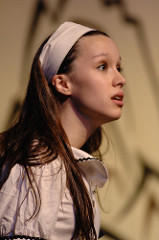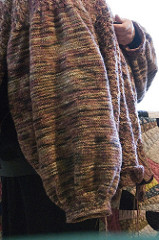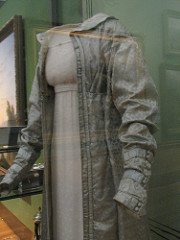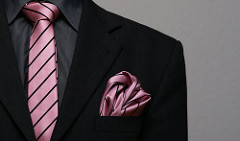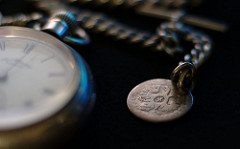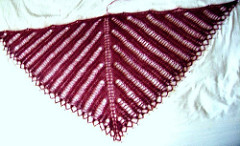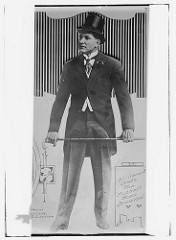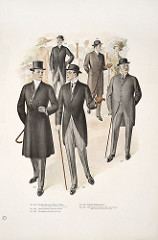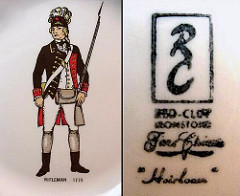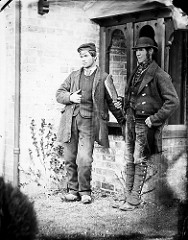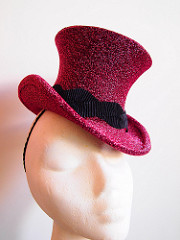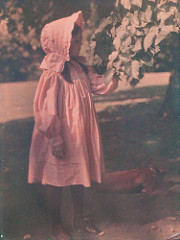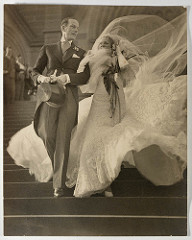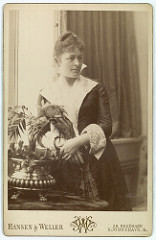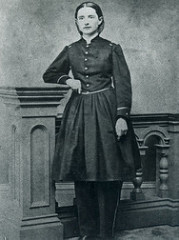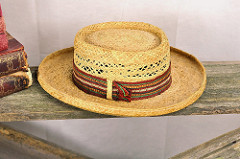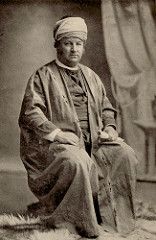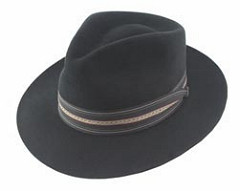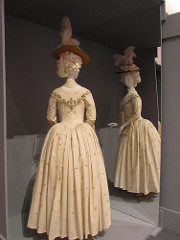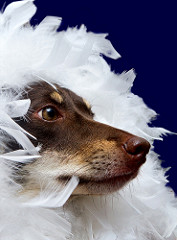tunic-general
this garment was made of a length of woven material or animal skin. It was typically folded in half, sewn up the sides with a slit for a neck opening.
loin cloth-general
This was made of cloth or fur and designed to cover the genital areas.
cape-general
This was a piece of fabric or fur, thrown or arranged around the shoulders.
girdle-general
This was a tie or belt-like article worn to support and/or arrange the design of the garment. It was also used for utilitarian purposes, e.g. to hold a knife. Often the girdle could be very decorative.
schenti (loincloth)-eqyptian
skirt for a man rectangular cloth wrapped around lower torso of man higher class would be pleated lower would be plain
shendot-eqyptian
draw attention to genital area the wealthier you are the bigger it is the more jewels
goffered-eqyptian
pleated
kalasiris-eqyptian
could have sleeves similar to sheath
procardium-eqyptian
straps “ps straps”
gala gown/gala skirt-eqyptian
gala gowns women gala skirts men gala=highly goffered
postiche-eqyptian
false beard (made out of wool) worn by royalty. started by female to achieve power
kohl-eqyptian
Kohl (made of galena, a sulfide of lead) used for eyes. Green and black substances were used, but kohl was black.
kuanakes-mesopotamian
wool skirt wrapped around torso started as sheep skin
anaxiride-mesopotamian
trouser fitted at ankle area
kaftan-mesopotamian
cotton or silk, ankle-length, long-sleeved robe
ephod-hebrew
(pancho) rectangular fabric 4 tassles long dress like. worn by priests
bolero jacket-cretan
woman’s short, cropped jacket or vest, often with a rounded cutaway front
tiered skirt-cretan
Women skirt had a basic bell shape with at least three different variations in form, smooth, with a series of ruffles.
chiton-greek
A Greek tunic, the essential (and often only) garment of both men and women, the other being the himation, or mantle.
fibulae-greek
decorative pins to hold a stola or other garments
chlamys-greek
cloak warn over shoulder, wool or leather
girdle-greek
An undergarment worn by women and girls designed to mold the lower torso and hips.
himation-greek
An ancient Greek mantle worn by men and women over the chiton and draped in various ways.
petasos-greek
greek hat worn for protection against weather. known as the traveling hat
phrygian cap-greek
Caps that symbolized freed Roman slaves in Roman era
tholia-greek
Greek, female, hat perched on top of the head to keep the sun off, made of woven straw, looks like a hershey kiss
buskin-greek
a laced boot reaching halfway or more to the knee; a tragedy resembling ancient Greek drama
tiara-greek
a crown-like jewelled headdress worn by women on formal occasions
peplos-greek
the traditional garment of Greek women; a sleeveless typically ankle-length tunic formed from a single squarish piece of wool/ generally worn pinned at the shoulders and belted.
stola-roman
a long garment, descending to the ankles, worn by Roman women
dalmatica-roman
is the main garment for early christian & byzantine clothing for men and women. tunic.
clavus-roman
stripes from Roman dress on either side of the tunic from hem to shoulder seam, gradually shortening to chest level.
palla-roman
form of wrap (their toga)
toga-roman
Roman outer robe
cuirass-roman
defensive armor for the torso.
dalmatique-byzantine
tunic like for man
juppe-byzantine
worn over tunic
paludamentum-byzantine
a large white or purple cloak similar to the greek chlamys, worn by emperors or generals
trousers-byzantine
(usually in the plural) a garment extending from the waist to the knee or ankle, covering each leg separately
tablion-byzantine
large square decoration in contrasting colors and fabric
segmentae-byzantine
decoration on the tunic can be on the shoulder or randomly placed circular or square
lorum-byzantine
long narrow jewled band evolves from toga ( because toga considered pagan
kirtle-medieval
a long dress worn by women
cotehardie-medieval
A knee length garment buttoned down the front to with a low waist always belted at the hip
surcoat-medieval
a coat worn over a knight’s armor
houppleland-medieval
high waisted, v necked floor length gown with either tight or wide sleeves
tippet-medieval
a shoulder cape,often with hanging ends
doublet/pourpoint-medieval
a man’s close-fitting jacket
chain mail-medieval
(Middle Ages) flexible armor made of interlinked metal rings
braies-medieval
loose fitting breeches fastened at the waist with a belt
chausses-medieval
medieval armor of mail for the legs and feet
camise-medieval
a loose shirt or tunic of the Middle Ages
liripipe-medieval
A long scarf or cord attached to and hanging from a hood.
skull cap-medieval
Plastic head-shaped covering to give appearance of baldness
veil-medieval
a garment that covers the head and face
chinstrap-medieval
hat with strap
wimple-medieval
a cloth worn on the head by medieval women.
toque-medieval
special pleated hat worn only by chefs
reticulated headdress-medieval
women braided their hair at the sides and coiled gold thread around in a decorative fashion.
hennin-medieval
woman’s exaggerated pointed hat
escoffion-medieval
A type of hennin style headdress that covers the head with a padded roll in a heart shape at the temples, richly brocaded fabric, sometimes like two horns with veil of fine lawn
poulaine-medieval
shoe with very long points, longer the point, more noble
patten-medieval
a clog, sandal, or overshoe with a thick wooden sole
chopine-medieval
women’s high platform shoes
parti-color-medieval
sewing together sections of different colored fabrics within one garment
doublet/pourpoint-renaissance
Men’s continuing fashion that becomes more ornate at this time with techniques such as slashing.
jacket/jerkin-renaissance
Worn over the doublet, usually had short puffed sleeves at the arm and sometimes had no sleeves.
peascod jacket-renaissance
Men’s jacket that is stuffed in the front to give of the appearance of a heavier set, because fat accumulation signified wealth and being well-fed.
vest-renaissance
small garment worn over shirt, no sleeves
wings or puffs-renaissance
Male/ female trend regarding how sleeves were attached. Puffs were stuffed. Wings were not stuffed.
ruff-renaissance
Lace or cotton
trunk hose-renaissance
short, full pants reaching about halfway down the thigh
pumpkin breeches-renaissance
padded pants, shaped like pumpkins, with panes [Elizabethan]
venetions-renaissance
Lower leg garment worn by men that fall beneath the knee, therefor longer than canions.
codpiece-renaissance
pouch of fabric laced into the crotch of men’s hose to cover genitals
points/aiglets-renaissance
Metal tips on strings used to tie pieces of garment together
slashing-renaissance
slits cut in the outer garments, wore bright colors underneath
spanish blackwork-renaissance
The most common form of embroidered edges
schaube-renaissance
worn as a coat
gown/robe-renaissance
worn by women
decolletage-renaissance
a low neckline on a garment or a garment with a low neckline
chemise/guimpe-renaissance
Female undergarment (1st garment put on). Could be high or low.
corset-renaissance
a woman’s close-fitting foundation garment
petticoats-renaissance
a skirt or slip worn as an undergarment
safeguard-renaissance
a precautionary measure warding off impending danger or damage or injury etc.
farthingale-renaissance
a hoop worn beneath a skirt to extend it horizontally
bum roll-renaissance
padded roll placed around waist to support dress
beret-renaissance
type of cap
cornet-renaissance
headwear
lappets-renaissance
flaps that come down on the side of the ears.
gable hood-renaissance
A hood of a headpiece that has an architectural peak which frames the face.
Mary Stuart cap-renaissance
covered hair and met in middle of forehead with tip pointing upwards
la ferroniere-renaissance
A women’s headpiece that is a band which ties around the forehead, or brim of the skull.
escarelle-renaissance
An accessorie worn on the belt as a purse
gauntlet-renaissance
an armored or protective glove; a challenge; two lines of men armed with weapons with which to beat a person forced to run between them; an ordeal
rochet-17th Century
a white ecclesiastical garment resembling a surplice worn especially by bishops and privileged prelates.
brandenburgs-17th Century
mans short saclike doublebreasted wrapper edged in fur
pantaloni/breeches-17th Century
pantaloon trousers
rhinegraves/petticoat breeches-17th Century
religious petticoat, womans underskirt
baldric-17th Century
a wide (ornamented) belt worn over the right shoulder to support a sword or bugle by the left hip
falling band and band strings-17th Century
flat, large lace collar, men and women
galants-17th Century
loops of ribbon wound and used on sleeves, bodices, skirts, and pants
rabat-18th Century
mens shoes
jabot-18th Century
An ornamental frill or ruffle on the front of a shirt or blouse, typically made of lace.
cravat-18th Century
A band or scarf worn around the neck
steinkirk-18th Century
a cravat with long hanging ends loosely twisted or looped together and worn esp. in the 18th century by men and women
cassocks-18th Century
A full-length garment of a single color worn by certain Christian clergy
manteaux-18th Century
a loose cloak, coat, or robe, A loose gown or cloak worn by women
bucket boots-18th Century
Thigh-high riding boot with cup-shaped wide top, square toes and higher heels than the jackboot
manteau-18th Century
overskirt, gathers in the back, like a bustle, low neckline [Restoration]
vertugadin/farthingale-18th Century
A hooped petticoat or circular pad of fabric around the hips, worn under women’s skirts to extend and shape them
stomacher-18th Century
A V-shaped piece of decorative cloth, worn over the chest and stomach in the 16th century
false/hanging sleeve-18th Century
unbuttoned lower part of sleeves which hang down, sometimes to ankle length
justaucorps-18th Century
a fitted, knee-length coat, characterized by wide turned-back cuffs and stiff flared skirts, worn especially by men in the 17th and 18th centuries.
fichu-18th Century
a woman’s kerchief or shawl, generally triangular in shape, worn draped over the shoulders or around the neck with the ends drawn together on the breast.
medici collar-18th Century
A fan-shaped (especially lace) collar, standing upright behind the head and sloping down to meet a square neckline in front.
berta collar-18th Century
Nine to 18 inches of fabric or lace attached all around neckline (or yoke). May or may not reveal the shoulders
echelle-18th Century
Stomachers were covered with ribbons, or eschelles
pinners-18th Century
a woman’s cap with two long flaps pinned on
palatine, pelerines, tippet-18th Century
A woman’s cape of lace or silk with pointed ends at the center front
perruque, periwig-18th Century
A highly styled wig worn formerly as a fashionable headdress by both women and men
cadenette or lovelock-18th Century
A curl of hair worn on the temple or forehead.
fontange-18th Century
A fontange is the name of a headdress popular in the late seventeenth and early eighteenth centuries in France
postilion-18th Century
kind of woman’s hat
patches-18th Century
A piece of cloth or other material used to mend or strengthen a torn or weak point
bayeux lace-18th Century
A fontange is the name of a headdress popular in the late seventeenth and early eighteenth centuries in France
muff/muffetees-18th Century
A tube made of fur or other warm material into which the hands are placed for warmth.
gauntlets-18th Century
A stout glove with a long loose wrist.
Vest or Waistcoat-18th Century
During the 17th century, a sleeved garment worn under the coat of similar length. It was introduced by Charles II and was thought to come from Persia.
Frock Coat-18th Century
a man’s coat having knee-length skirts front and back
Redingote-18th Century
double-breasted man’s coat, open-fronted, lightweight woman’s coat
Neckcloth-18th Century
square or rectangular folded into triangles – wrapped around several times and tie
Ramille Wig-18th Century
very full, curly, shoulder length
Bag Wig-18th Century
A wig, with the hair at the back of the head in a bag.
Solitaire-18th Century
A type of toupee with a hairbag attached at the back, underneath a big bow.
Tricorne-18th Century
cocked hat with the brim turned up to form three points, feathered [Restoration]
Gaiters-18th Century
A heavy cloth or leather covering for the leg extending from the instep to the ankle or knee
Spatterdashes-18th Century
Long leggings of leather, canvas, or cloth, worn from 17th C onwards as protection from mud-splashing in riding and walking.
Watteau Gown-18th Century
long unfitted dress with box pleats at upper back that fall into a train
Robe Francaise-18th Century
French dress composed of three parts: robe, stomacher and petticoat
Robe Anglais-18th Century
dress full skirt
Polonaise-18th Century
an overdress and petticoat in which the overskirt was puffed and looped by means of tapes and rings sewn into the skirt.
Robe Redingote-18th Century
Dresses open in front to show an underskirt or with a front gore of contrasting material, with collar and lapels and long sleeves. Bodice may be double-breasted and high-waisted
Levite Gown-18th Century
another term for redingote gown
Panier-18th Century
collapsible boned basket that supported the skirt on either side of the hips
Falbala-18th Century
a flounce or trimming for a woman’s garment–petticoat, apron, or scarf
Pagoda Sleeve-18th Century
Open sleeve which flared widely below the elbow; drew attention to lingerie under the sleeves.
Modesty Piece-18th Century
square fabric that tucks into the low V-neckline. seduction
Pelisse-18th Century
an outer garment lined or trimmed with fur; a woman’s long cloak with slits for the arms
Calash-18th Century
a bonnet to protect a women’s hair that was made of a series of of semi hoops sewn into the hood at intervals [Late Georgian]
Handkerchief-18th Century
a square piece of cloth used for wiping the eyes or nose or as a costume accessory
Blonde Lace-18th Century
white lace
Watch Fob-18th Century
Short ribbon or chain attached to a watch and hanging out of the pocket in which the watch is kept
a la Brutus-1780 – 1800
men’s hair worn closely cropped and unpowdered and worn disheveled or curly all over.
hedgehog hair-1780 – 1800
hair that is short in front and longer ringlets in the back, frizzy lookin
Bicorne-1780 – 1800
Two cornered hat.
Carmagnole-1780 – 1800
short woolen or cloth jacket of dark color worn by Revolutionaries
Phrygian Cap-1780 – 1800
cap with that droops forward on top
Fichus-1780 – 1800
a small triangular shawl, worn around a woman’s shoulders and neck
Chemise Gown-1780 – 1800
also know as the chemise a la reine, was made popular by Marie Antoinette, made of a light, flowing fabric. Queen criticized by public for wearing the undergarments even the public itself adopted the style
Spencer-1780 – 1800
a woolen outer tail-coat with the tails cut-off. It was worn as a short waist-length, double-breasted
Reticules-1780 – 1800
A drawstring handbag or purse
Poke Bonnet-1780 – 1800
A women’s hat in the shape of a hood, with a projecting visor-like brim in front worn for shade from the sun.
Sans Culottes-1780 – 1800
silk knee breeches
Muscadine-1780 – 1800
Paris exquisites; The well dressed youth who rebelled against the sans culottes and formed gangs.
Merveilleuse-1780 – 1800
female fashion extremist, the marvelous ones (radical form of dress – no corsets, sheer fabrics)
Dandy-1780 – 1800
a man unduly devoted to style, neatness, and fashion in dress and appearance
Incroyable-1780 – 1800
french evolution dresses
Beau Brummel-1780 – 1800
early 1800 picture of mens fashion, established a mode of wearing understated but fitted and tailored clothing, dark suits and full length trousers, adorned himself with cravats
Cutaway Coat-1800 – 1820
Fitted waist-length front with long back tails. Now worn only for formal wear. Also known as a tail coat.
Garrick-1800 – 1820
overcoat that had 3-5 cape collars, tabbed closings, and a quilted, stiffened, high collar
Hessians-1800 – 1820
footwear for the military, especially officers, it would become widely worn by civilians as well. The boots had a low heel, and a semi-pointed toe that made them practical for mounted troops as they allowed easy use of stirrups.
Wellington-1800 – 1820
boots developed after hessians
Gaiters-1800 – 1820
A heavy cloth or leather covering for the leg extending from the instep to the ankle or knee
Chapeau Braus-1800 – 1820
hat bicorne
Top Hat-1800 – 1820
A high crowned hat with a flat top and narrow brim. Also called Chimneypot hat, Stovepipe hat, pot hat, plug hat, silk hat; subtle differences applied to the different names.
Claw Hammer Tails-1800 – 1820
same as tailcoat
Betsies-1800 – 1820
simulated ruffs of two to six layers
Mamelouk-1800 – 1820
warrior full armor and armed
Pelisse-1800 – 1820
an outer garment lined or trimmed with fur; a woman’s long cloak with slits for the arms
Turban-1800 – 1820
a traditional Muslim headdress consisting of a long scarf wrapped around the head
Bonnet-1800 – 1820
a hat tied under the chin
Leg-O-Mutton Sleeve-1820 – 1850
full at shoulder, decreasing in size to wrist ending in fitted cuff
Tailcoat-1820 – 1850
a man’s jacket which is short at the front and divided into two long pieces at the back, worn to very formal events
Bertha- 1820 – 1850
wide deep collars following the neckline
Cravat- 1820 – 1850
A band or scarf worn around the neck
Ditto Suit-1850 – 1870
Suit worn by men tin the 18th century. Jacket, pants, outercoat or waistcoat were all the same color or same fabric. The more ornate fabric was usually more for full dress…the plain wool, or less formal was for more of a daytime dress
Sack Coat-1850 – 1870
men’s short coat cut to hang straight from the shoulder with no seam or tapered line at the waist
Amelia Bloomer-1850 – 1870
Advocated the “bloomer costume”; short skirt with full-length pantalettes
Knickers-1850 – 1870
(usually in the plural) underpants worn by women
Hooped Petticoat-1850 – 1870
Petticoat shaped with boning structured to create fullness in a skirt without multiple layers.
Raglan Coat-1850 – 1870
Inspired by Lord Raglan, the Raglan Coat is sewn with the sleeve extending all the way into the neckline.
Crinoline-1850 – 1870
A petticoat of haircloth or other stiff material, worn under a full skirt to keep it belled out
Straw Hat-1850 – 1870
head covering made of dry stalks of grain
Bowler-1850 – 1870
a hat that is round and black and hard with a narrow brim
Burnoose-1870 – 1890
a hooded Arabic cloak
Fedora-1870 – 1890
a low, soft felt hat with a curled brim and the crown creased lengthwise.
Dolman Wrap-1870 – 1890
Coat with sleeves cut in one with the body and whole tapering toward the ankles
Inverness Cape-1870 – 1890
A combination cloak and coat garment that does not have sleeves and is lined with silk, suitable for evening wear.
Bustle-1870 – 1890
A pad or a light frame added to the back of a dress to give it bulk.
Cuirass Bodice-1870 – 1890
a long, slender bodice well fitted to the hips, ending at a point in the front. It was torn over a skirt where the fullness was below the hips.
Princess Line-1870 – 1890
A gown cut in one piece with a lot of jointed panels that are fitted along the length of the garment creating fullness and shape. This cut replaces the bustle, being very fitted with a cuirass bodice and elongated by a train.
Polonaise Style-1870 – 1890
gown style borrowed from Polish peasants. pulled up at regular intervals for a scalloped edge. meant to be more casual
Peplum-1870 – 1890
a flared ruffle attached to the waistline of a dress or jacket or blouse
Balayeuse-1870 – 1890
a custom fabric bedding treatment applied between upper and lower mattress, touching the floor. (bed skirt), A ruffle on the inner side of the hem of a skirt or petticoat to protect it from the ground.
Princess Dress-1870 – 1890
A full-length dress cut in one from shoulder to waist with a number of gores and full enough in the skirt to go over a hoop. Usually it buttons up the front.
Norfolk Jacket-1870 – 1890
A jacket with box pleats or straps of the same material passing over the belt and extending from shoulder to hem in front and back; usually worn for sporting occasions.
Tailored Ensemble-1870 – 1890
The introduction of tailor-made ensembles for women during this period.
Ascot-1870 – 1890
a man’s broad silk necktie
Leg-of-Mutton-1870 – 1890
Wide at shoulder then narrow for the remainder of the arm
Sport Clothing-1870 – 1890
Women’s sport’s clothing still extremely restrictive. Waterproof clothing and swimwear are made during this period.
Boa-1870 – 1890
feathered neck shall for women
